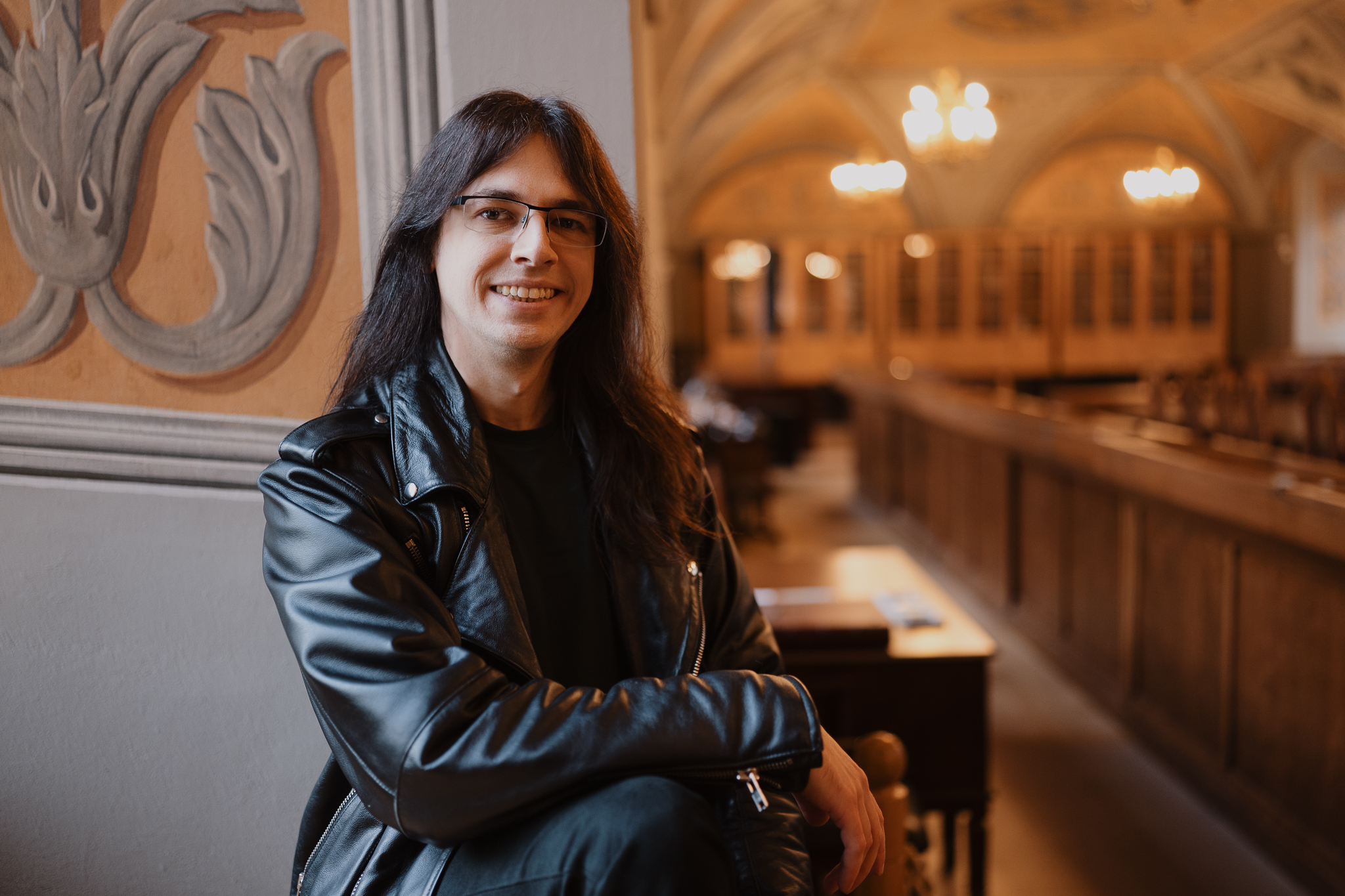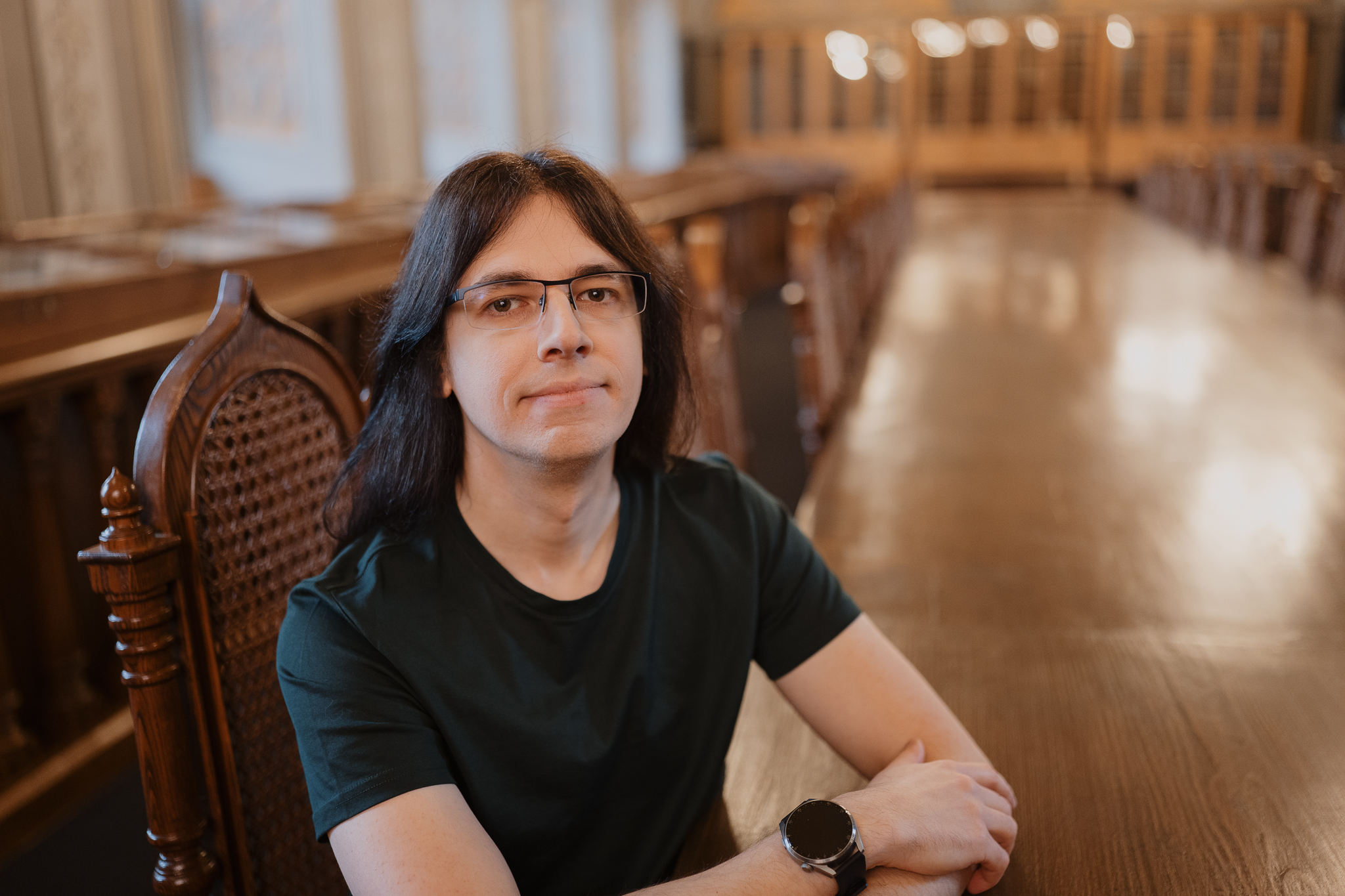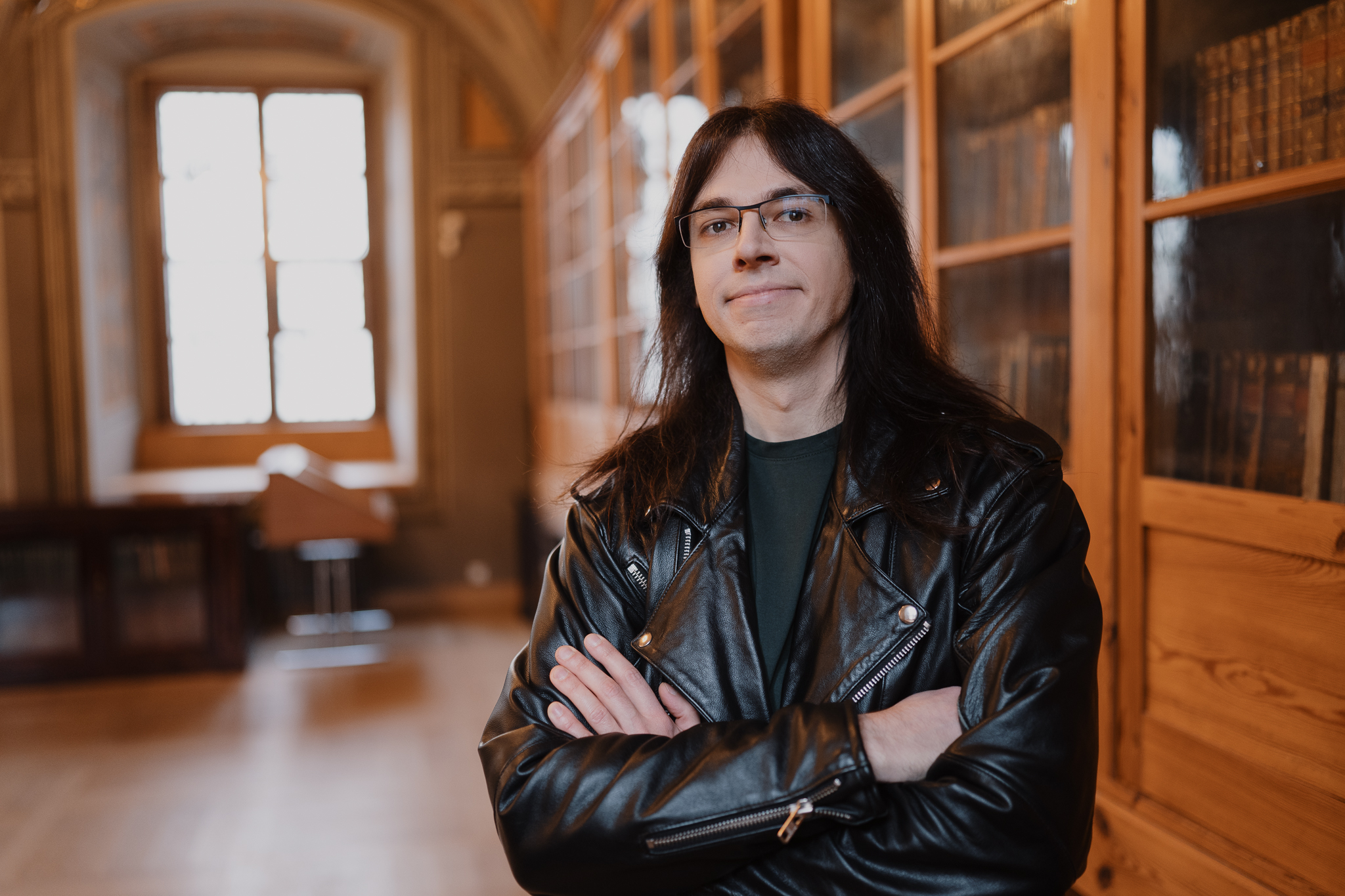VU Astrophysicist Who Didn’t Take the Physics Exam at School Is Now Transforming the Future of Radiology

Dr Jonas Bialopetravičius, lecturer of the Faculty of Physics at Vilnius University (VU) who works at the startup “Oxipit”, deserves to be introduced in a particularly interesting way: hearing an astrophysicist say that searching for star clusters and signs of an illness in a lung X-ray is the same thing is bound to spark curiosity.
Only a few would consider that the same question arises when looking at the starry sky and an X-ray: Is everything as it should be? Has anything gone unnoticed? However, this is the exact train of thought of the artificial neural network specialist, programmer, and co-founder of “Oxipit.ai”, Dr Bialopetravičius. Although physics seemed far away during his school years, the astrophysicist is now creating technologies that can change the future of radiology.
The VU lecturer explained how artificial intelligence (AI) is reshaping radiological practice and patient care, as well as what changes can be expected in medicine over the next five years and his unexpected turn towards astrophysics.
“Oxipit” was the first in the world to get the CE marking
After obtaining a Bachelor’s degree in software engineering and a Master’s degree in informatics from Vilnius University, Jonas Bialopetravičius worked as a research engineer at the company “Neurotechnology”, where he contributed to the creation of the image recognition engine “SentiSight”. He later put his experience into business, becoming a co-founder of “Oxipit”, where he currently works as chief technology officer.
The activity of the innovative startup provides radiologists with a “second set of eyes”, decreases the chance of human error, and speeds up the diagnosis process. This Lithuanian startup was the first in the world to receive the CE marking, allowing the software to be used autonomously, without direct oversight from a medical radiologist. This Lithuanian accomplishment marks a significant milestone in the automation of X-ray analysis and has garnered huge attention worldwide.
“There are companies employing AI in radiology that have ten times more funding and many more employees, yet they are only just catching us up in the field. It seems we managed to bring people with the right experience together to create this. This accomplishment in radiology and medicine signals that, in more and more instances, AI will be able to make autonomous decisions. It’s very unlikely, if not completely impossible, that something would completely replace a doctor in the near future. However, the automation of simpler jobs and tasks will become more common,” said Dr Bialopetravičius.

The “ChestEye” software, created by the scientist and his team, is already being employed in Lithuania’s hospitals, such as Vilnius University Hospital Santaros Klinikos, Šeškinė Polyclinic, and Kaunas City Polyclinic. In one health check, “ChestEye” detected 190 changes that went unnoticed by doctors. While many of the abnormalities are very subtle and hard to notice by the human eye, some of them may indicate the early stages of lung cancer. It should be noted that currently, AI is not used autonomously in Lithuania: this means that the doctor’s job is not fully replaceable. According to the researcher, this is not yet possible due to legal regulation; therefore, “ChestEye” is used as advisory software. To put it simply, AI suggests a description of a radiology image, but the doctor still needs to review and verify the results.
“In this case, we do not gain any speed, but we can gain some accuracy: some precise things may be noticed that a person would not pick up on. In theory, AI with the CE marking can be used autonomously throughout Europe, but in practice, every country has its own legal framework, which does not necessarily match European-level regulations,” the scientist explained.
Nevertheless, the work doesn’t stop here. Dr Bialopetravičius notes medical equipment is constantly monitored and updated to run smoothly. Many challenges still arise when creating AI systems for medicine. Firstly, if AI points to the wrong conclusions, there is a risk of harming the patient. Secondly, working with patient information is challenging: storing it correctly, preventing information leaks to the internet, and ensuring that patient rights are not violated.
For this reason, there is a regulatory system of legal acts: Europe has the CE marking; in the US, there is the FDA. These marks show that the product adheres to the legal requirements of the European Union in the field of medicine and that it can be sold on the market.
“There is already some practice in solving any issues so that the patient is not harmed; we encounter this situation fairly often. We also work on verifying the results; they have to be checked – and not just five or ten times – to assure that the AI is consistent and behaves in the way we want it to perform,” clarified Dr Bialopetravičius.
AI can solve the global shortage of radiologists
In many countries, especially in developing regions, there is a severe shortage of radiologists, which, according to Dr Bialopetravičius, will only increase in the future. This means that patients must wait longer to get services, which can delay the diagnosis and treatment of serious illnesses. This issue may seem irrelevant in Lithuania since the situation here is good: in most cases, the radiograph description is provided relatively quickly – within a day or sometimes even the same day.
“For example, there are 14 million people in Rwanda but only 14 licensed radiologists. In countries like the UK, patients might need to wait for weeks or even months to have their chest X-rays viewed by a specialist. Countries encounter different problems, and some struggle to provide even basic diagnostic services. AI will probably have the greatest impact there,” remarked the VU lecturer.
Imagine this: a radiologist takes several minutes to write an X-ray description, while AI can do that in only a few seconds. However, the main difference is that AI is always ready to look at an image, whether it’s night or day, or whether a doctor is there, 24 hours a day, 7 days a week, without holidays or vacations. This means that more images can be processed. Plus, AI always acts the same; it doesn’t need any rest or a cup of coffee in the morning.
According to Dr Bialopetravičius, “AI has already been used in medicine for a long time; for example, it can convert verbal information into text. However, modern AI that could automate more difficult processes or even completely replace a doctor is only beginning to develop. AI is already capable of taking over some tasks that doctors do. I think that in the next five years, AI will increasingly take over certain tasks from doctors, which will help reduce their workloads or enable them to work on more patients.”
“Programming is similar to poetry”
Dr Bialopetravičius’ CV contains significant academic titles and projects, such as using AI to diagnose cancer from X-ray images. Yet the scientist describes himself as someone who doesn’t take life too seriously.
“It helps me not to give too much importance to my accomplishments and not to get discouraged in case something is not going well. I am quite a free-spirited person – someone who enjoys what they’re doing,” he said.
Nevertheless, he didn’t dream of a career in medical AI applications. Having grown up in a family of artists, Dr Bialopetravičius became interested in programming, thanks to his older sister. He says he has never been a top student, and his abilities in mathematics only became apparent in the last few years of school when he saw that effort really pays off.

After school, he planned to study in the UK but finally decided to pursue his studies at Vilnius University: “Honestly, Vilnius University feels like home to me; it’s a place I keep returning to; I feel comfortable being and working here. Teaching, for me, is a way to stay connected to the university. It’s nice to work with young people and help them grow, as well as useful for me because it’s easy to forget the basics when you’re working on other things, but teaching allows me to revisit them.”
Today, Dr Bialopetravičius describes himself mainly as a programmer and maintains that programming is an artform: “A famous computer scientist, Fred Brooks, has said that programming is like poetry. Programmers, just like poets, build castles out of thin air with their imagination. This saying has always resonated with me. The only difference is that the programming results are immediately reflected in reality: something moves across the screen, and text appears. That is a creative activity,” shared Dr Bialopetravičius.
An unexpected turn towards astrophysics
“Of course, I never imagined some things, for instance, that I would do a PhD in physics since I didn’t sit the national physics exam, and I wasn't very good in physics at school,” admitted the VU scientist, who now boasts a Doctoral degree in astrophysics. This subject appeared in his life by chance, thanks to a physicist roommate.
“He studied physics at Vilnius University while I did software engineering. Following his example, I started dabbling in physics. Later, when I graduated with a Master’s, I considered doing a PhD in informatics. However, my roommate told me they are searching for a doctorate student in astrophysics who would be strong in informatics and could apply AI to astrophysics. It seemed like an interesting challenge, so I decided to try it out. I’m used to reading academic articles from the fields of AI and informatics, and I understand the language. But when I opened an article about astrophysics, I would have to look up every second word. I sometimes wondered if I was in the right place,” he remembered.
Dr Bialopetravičius noted that he benefitted from every study cycle in different ways. Bachelor studies gave him the basics that proved invaluable in later studies and more complex topics. Some things that would have been too boring to self-study became understandable and achievable in the university environment. Master studies enabled him to deepen his knowledge and interest in AI. The VU scientist says that it was then that he started focusing on this subject.
“My Doctoral studies experience stood out the most: I had to write scientific articles in very precise language, explaining extremely technical things in a short, clear, and simple manner, and providing results in an intelligible way,” explained the scientist.
During his PhD studies, Dr Bialopetravičius looked for star clusters using AI. Today, he is helping to create AI solutions for radiology. It might seem that space exploration and human X-ray images have nothing in common. Still, the researcher thinks the contrary is true: “If we look at it more generally, the difference isn’t that significant: in astrophysics, as in medicine, we analyse images and search for particular characteristics. The main point is how the data is formulated.”
For a long time, both doctors and astronomers used to rely on intuition to evaluate X-rays or search for star clusters, respectively: “Artificial neural networks have been created to partially take over these skills: in some fields, they are already surpassing humans; in others, they are still behind, but the principle remains the same,” remarked Dr Bialopetravičius.